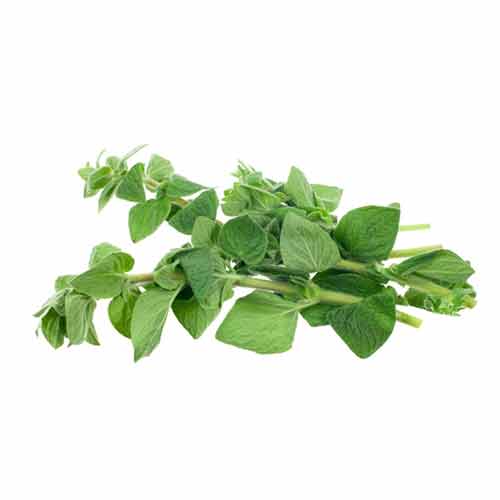Origan (feuilles) extrait CO2-se, type phénol
Product-No.: 103.001
Matières Premières:
Origanum vulgare – Leaves, dried
Fabrication:
By supercritical fluid extraction with natural carbon dioxide, no solvent residues, no inorganic salts, no heavy metals, no reproducible microorganisms [1].
Ingrédients:
voir spécifications
Utilisation:
Oregano has antimicrobial, antioxidant and anti-inflammatory effects. In addition, the essential oil of oregano improves gastrointestinal health, which is why the oil is used in folk medicine to treat digestive disorders. Other folk medicine uses of the oil are for colds and as a diuretic [2,3,4].*
Oregano is a popular spice and is used in many ways, especially in Italian cuisine. Oregano extract is therefore suitable as a spice extract for flavouring many foods, such as spice mixtures, soups, sauces and baked goods. Furthermore, the extract has an antimicrobial effect, especially against food relevant pathogens such as Listeria monocytogenes or Escherichia coli [2,3].*
Due to its positive properties, which is why the extract is also used in folk medicine, the extract is also well suited as an ingredient in food supplements.*
Oregano extract has a spicy, characteristic scent profile, which is why it is used as a fragrance in various cosmetic products, such as soaps, perfumes and more. Due to its antimicrobial effect, the extract is also suitable as a natural preservative and as an ingredient in mouthwashes and toothpaste.*
Littérature:
[1] P. Manninen, E. Häivälä, S. Sarimo, H. Kallio : Distribution of microbes in supercritical CO2 extraction of sea buckthorn (Hippophae rhamnoides) oils : Zeitschrift für Lebensmitteluntersuchung und -Forschung / Springerverlag (1997) 204: 202-205
[2] Jacob P. Veenstra, Jeremy J. Johnson : Oregano (Origanum vulgare) extract for food preservation and improvement in gastrointestinal health : Int J Nutr. 2019
3(4): 43–52.
[3] Hercules Sakkas, Chrissanthy Papadopoulou : Antimicrobial Activity of Basil, Oregano, and Thyme Essential Oils : J. Microbiol. Biotechnol. (2017), 27(3), 429–438
[4] Wolfgang Blascheck u.a. (Hrsg.) : HagerROM 2017, Hagers Enzyklopädie der Arzneistoffe und Drogen : Suttgart: Wissenschaftliche Verlagsgesellschaft Stuttgart, 2017
